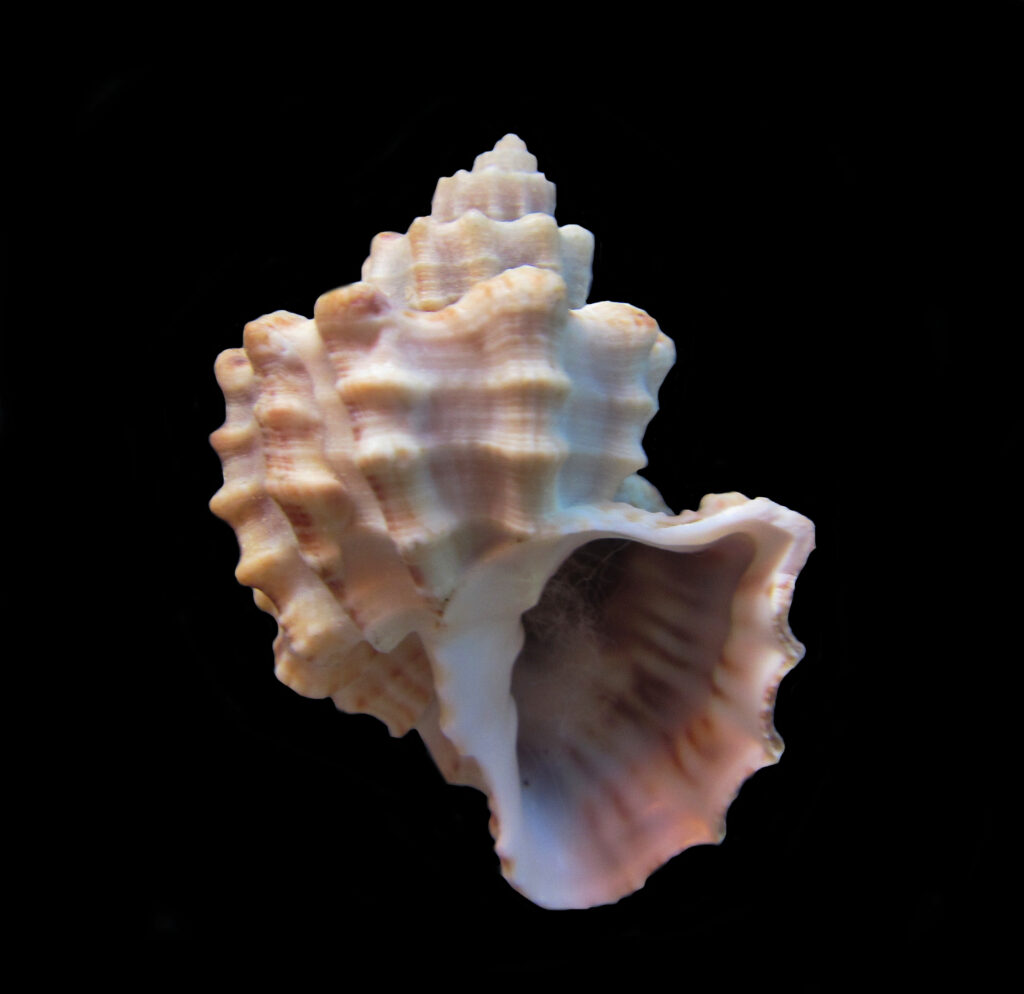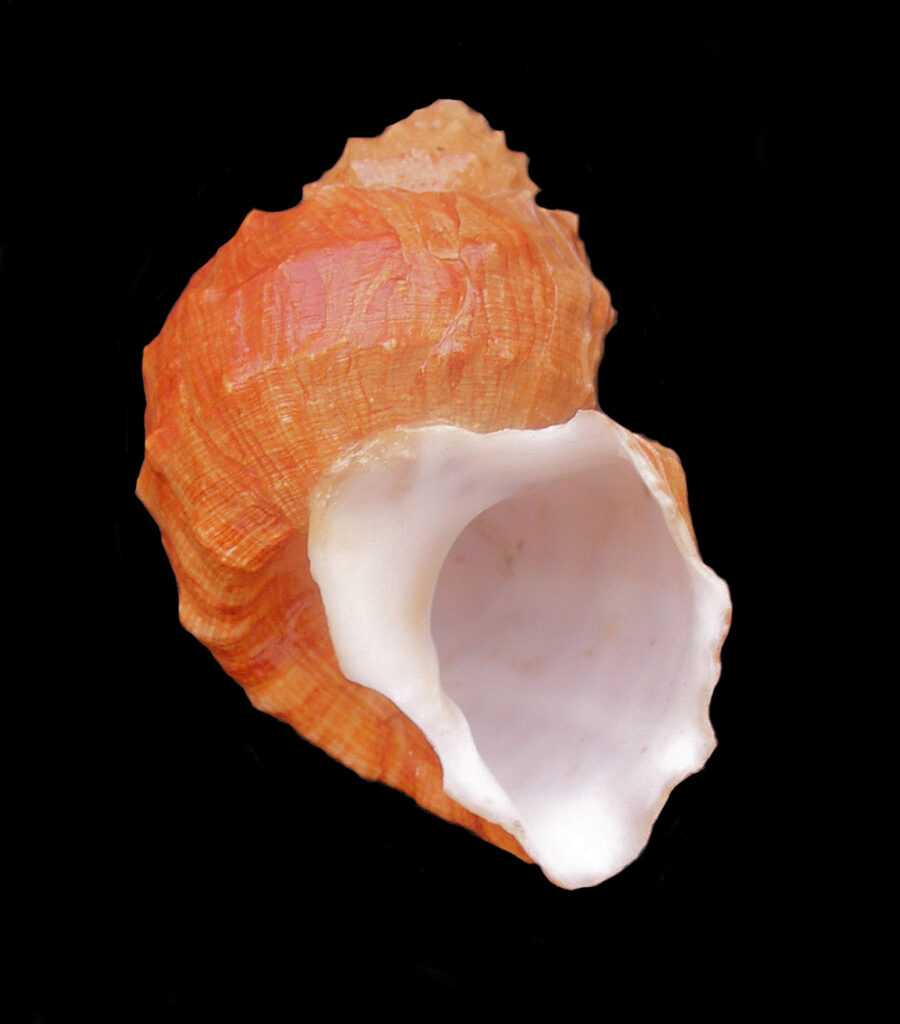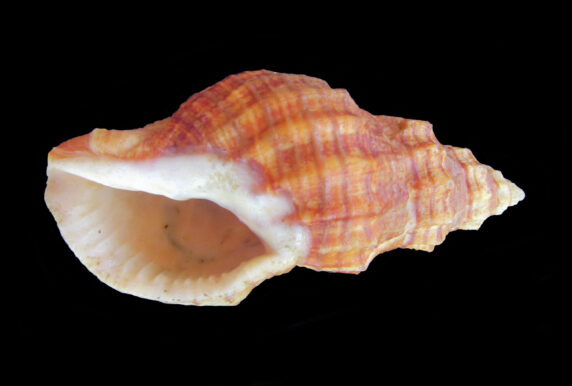Nutmeg Shells of the Cancellariidae Family derive their common names from their resemblance to nutmeg plant seeds and their family name from the cancellate (lattice-like) sculpture on found on a portion of the shell. The cancellate sculpture comes from the crisscrossing of spiral and length-wise ridges. They are small to medium sized shells that vary in shape and can have bullet, cork-screw, globose, or tear-drop profiles. Most Nutmeg Shells have fairly big body whorls, a moderately to high spire, a short siphon canal and an elongated aperture. Most family members that have “teeth” on one or both lips of the aperture. Some species have spines along their shoulder. These shells do not have operculum.
Nutmegs live on sand or mud substrate in the intertidal zone to depths up to 1,200 m (4,000 feet). They are found in tropical and temperate waters, world-wide. They are carnivores, though little is known about their food sources. In turn they are preyed upon by crabs, fish, and predatory mollusks. There are about three hundred and sixty global species in the Cancellariidae Family of which fourteen are found in coastal waters of Baja.


